Can your players plan their turns?
Exploring the impact of game state changes on the ability of players to have a strategy and plan their turns in advance. The difference between strategic vs. tactical player experiences.
Last week we looked at Dune: War for Arrakis and how it uses a dice-based action selection mechanism in an interesting way. The game is essentially a two-player game, although it does include rules for playing with four-players as two teams.
This week we are exploring the impacts of variable player count games. A game might say it plays 1 to 8 players… but is it the same game at all of those counts?
Hooking crooks and doing crime
A while back, I played In Too Deep (Cappel & Chow, 2021) with a group of friends. The game has a cyberpunk theme where you are hijacking criminal’s brains and using them to conduct heists. You’re not the one committing the crimes. Instead you are making others do the dirty work for you.
Without explaining the whole game, rounds look like this:
Hook: Take control (“hook”) of a criminal to use them.
Actions: Perform two actions (e.g. move, pick up an item, use a power, etc.).
Crime: Complete a “crime” by meeting the specified criteria and all required prerequisite crimes. Resolve any consequences of completing the crime.
This all takes place on an 8-segment, circular board where criminals can be moved between locations like Riverside, Downtown, or The Parish.
Crimes requirements are usually a mix of criminal, location, items, and positioning:
The SENTINEL must be in DOWNTOWN, which must have 2 BLOCKADES. You must be in the OPPOSITE zone holding the BLASTER
You must be holding the SCRAMBLER, ALONE in a zone with at least 1 BLOCKADE.
It’s a great concept, but one that didn’t play out as I expected.
Trying to plan a deep cover tech heist
Many of the crimes required multiple steps to complete them. You might need to spend actions to go to a location, retrieve an item, and then move to another location. Sometimes this required a specific criminal. Other times it required other criminals to be in your location or not in your location.
At the start of the game I was planning my moves ahead to make sure everything would line up in a few turns. Move here. Grab that. Finish the job.
As we played, however, I kept bumping into problems. I’d head somewhere to retrieve an item, but someone else grabbed it before I could. Or I’d have the item and be in the right location, but another player would move a criminal in the same spot as me… meaning I was no longer “alone” for the crime criteria. Sometimes I’d just need to hook the right criminal and take an action, only to not be able to use them.
I stopped planning my actions ahead, as it seemed like a waste of time. Instead, I’d just wait for my turn and take the best action I could. Why?
Strategic vs. tactical games
This is the difference between tactical vs. strategic games:
Strategic: Achieving a long-term goal and/or game state via many actions
Tactical: Short-term reactions to the current game state
In a highly strategic game, players make plans to achieve long-term goals using broad approaches. Each choice might push them closer or farther from that goal, but the outcome is resolved over many turns.1 One poor action probably doesn’t matter as much as the overall sum of the actions.
Highly tactical games are sort of the opposite of this. Instead of aiming for a long-term plan, players are reacting to the current game state and other player’s actions. This might involve reacting to other player’s positioning, available resources, or which cards are available on their turn. There’s no way to know what the game will look like a few turns away.
The crimes in In Too Deep required strategic planning, but that’s where player count starts to matter… a lot.
The problem of player count
Imagine a two-player game of In Too Deep. One player hooks their criminal, takes their two actions, and maybe resolves a crime. Then the other player does the same, completing the round. Play then returns to the first player.2
In this scenario, a player takes a turn, there are two actions by other players which change the game state, and then play returns to the first player.
Add third player to the game and you can start to see the potential issue. Now when a player takes their actions to line up a crime, there are 2 x 2 actions by other players. Four actions that change the game state before they get to do their next move. Four chances to grab the item they needed, move a criminal, or hook the one they needed.
At four players, there are six game state changes before your next action.
My group of friends had attempted to play In Too Deep with five players… about eight game state changes before each player could take their next turn.
At two players, In Too Deep can be a blend of strategic and tactical choices. At five players, it becomes purely tactical. There’s no way to have a long term strategy because of the high game state change rate until the next turn.
Impact on player downtime
This switch from strategic to tactical also has an impact on player downtime (i.e. the idle time spent waiting for your turn).
In a strategic game, the time between turns is valuable and engaging. That’s the time to plan your strategy, figure out the right order of actions to take, and to make sure everything goes according to plan. Although it is still technically “downtime” in the game (i.e. it’s not your turn and you aren’t taking actions), it’s certainly not boring.
Once a game becomes purely tactical, however, AP and downtime can become deadly. There’s nothing for players to do because planning ahead makes no sense. They must simply wait for their turn and react to the current game state.3
It can happen in TTRPGs too
I’ve seen this switch from strategic to tactical show up in TTRPGs as well. In games like Emberwind RPG, characters have unique combat abilities which can be extremely fun. Some rely on positioning, set up, and combos to trigger effectively.
At low player counts, this works well and players can use their characters to the fullest. At higher player counts, that foe you were trying to line up might be dead by the time you get there. Do that a few times and it’s not particularly fun to plan anything in the future.
The mechanisms, player count, and churn of the game state all contribute to the strategic vs. tactical feel of the combat. The more tactical it becomes, the less planning is required. Downtime becomes more of a potential issue and fast turns are necessary.
Conclusion
Some things to think about:
Understand strategic vs. tactical decisions: As with most things, whether your game is strategic or tactical depends on the kinds of fun you want your players to have and what player promises you make. There is no “right” answer, but knowing the difference and how it impacts the players experience is important.
Player count impacts everything: If I had checked the BGG In Too Deep recommended player count, I would have seen that 91.2% of votes at 5-player say not recommended. The best player count based on votes is either 2 or 3 players. Some games are just different at various player counts — others become less fun.4
Tactical games are fun too: I love tactical games too! Games like Panda Panda and Scout are almost purely tactical. You are reacting to the current game state and not trying to plan three turns down the road. Yet they are still a lot of fun.
What do you think? Do you prefer strategic, tactical, or a mix of both? How do you allow players to have strategic planning in TTRPG combat with many game state changes?
— E.P. 💀
P.S. Behold the grub. 🐛
Skeleton Code Machine is a production of Exeunt Press. All previous posts are in the Archive on the web. Subscribe to TUMULUS to get more design inspiration. If you want to see what else is happening at Exeunt Press, check out the Exeunt Omnes newsletter.
Skeleton Code Machine and TUMULUS are written, augmented, purged, and published by Exeunt Press. No part of this publication may be reproduced in any form without permission. TUMULUS and Skeleton Code Machine are Copyright 2025 Exeunt Press.
For comments or questions: games@exeunt.press
This idea of many tiny choices determining the outcome of a game vs. a few large decisions is something I played with in Tollund.
There are more phases and complexity than I’m implying here. I’m keeping it simple to illustrate the impact of player count without providing a full rules teach.
I think this might be why strategic wargames are more OK with downtime between turns. Long turns don’t seem as bad because that’s the time to spend planning your strategy. You can decide what to do on your next turn, with only slight adjustments based on game state changes.
Games like Hansa Teutonica, The White Castle, Troyes, and Knarr all work at different player counts even though the gameplay feels considerably different. The economies are impacted, how tight worker spaces are, and all sorts of things. In those games, however, I wouldn’t say one player count is better or worse than others. Instead they are just different games that appeal to different types of fun depending on player count.

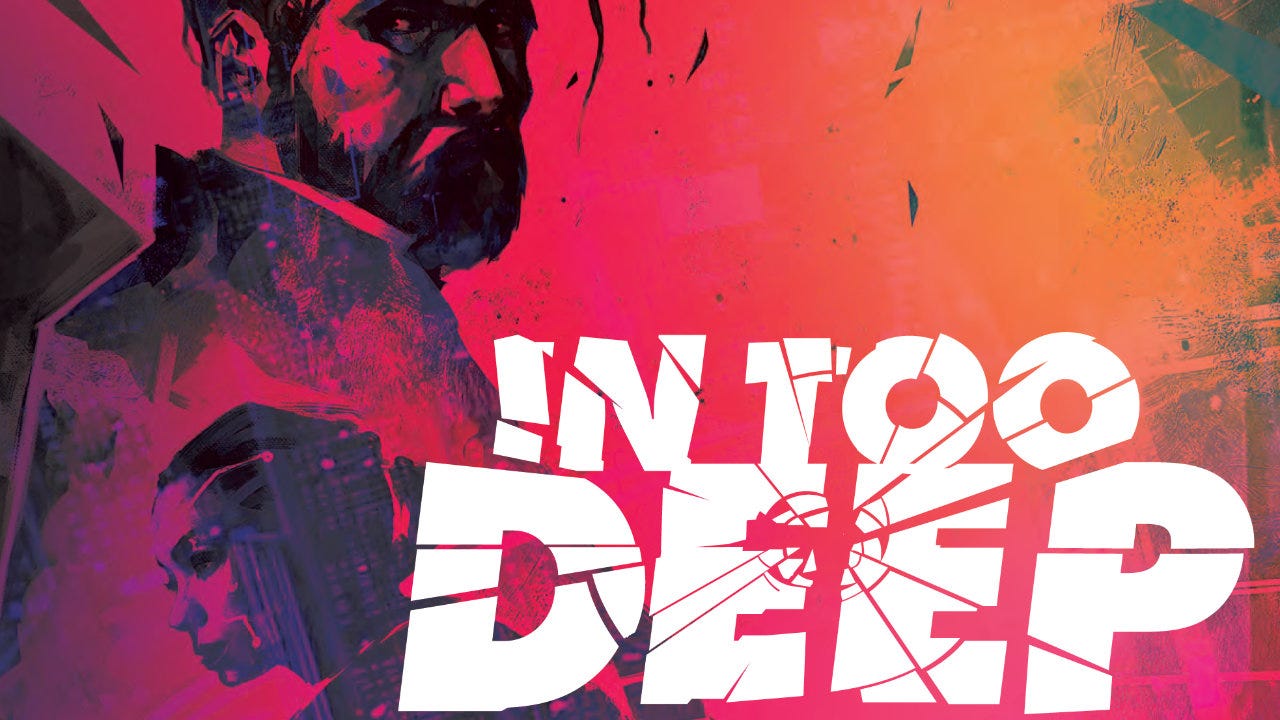
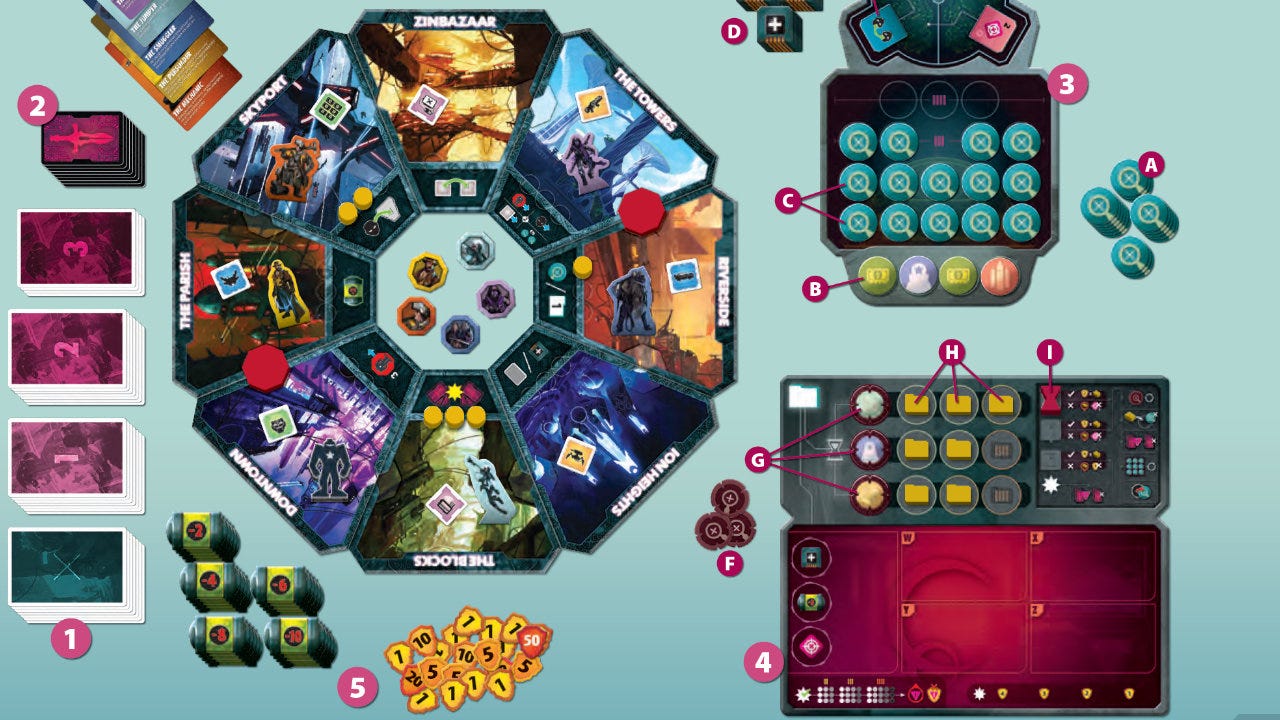
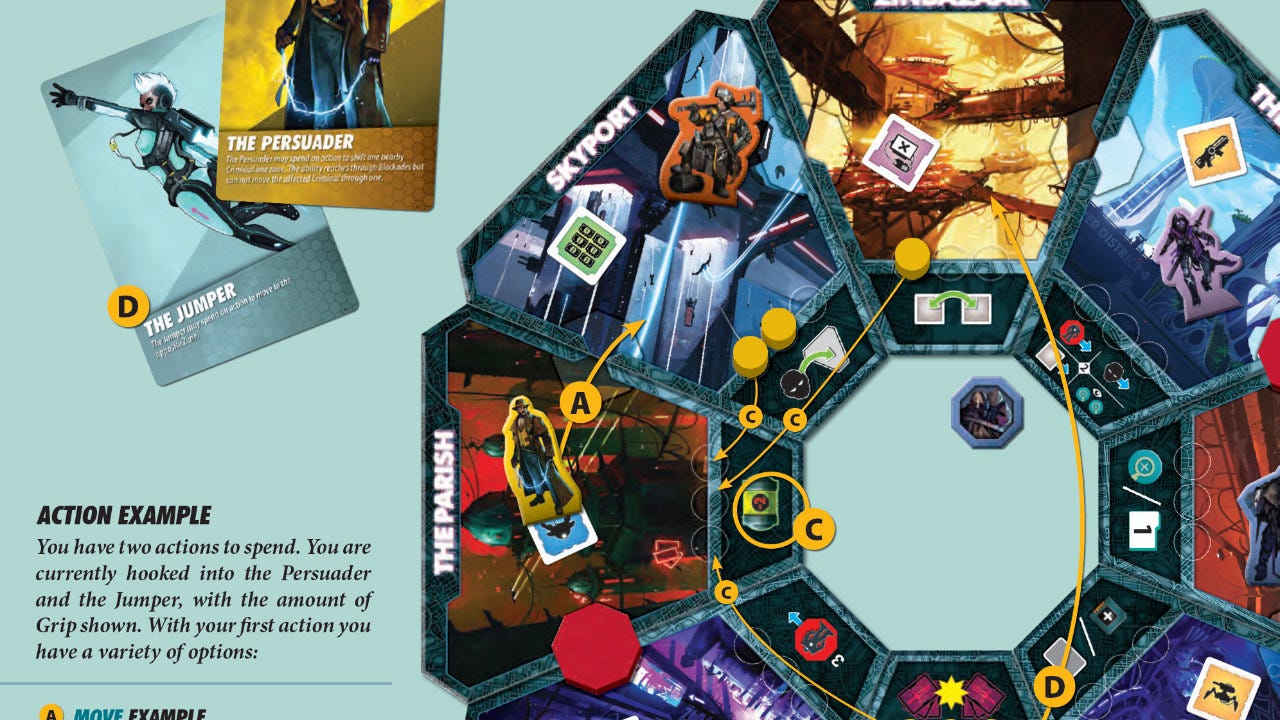
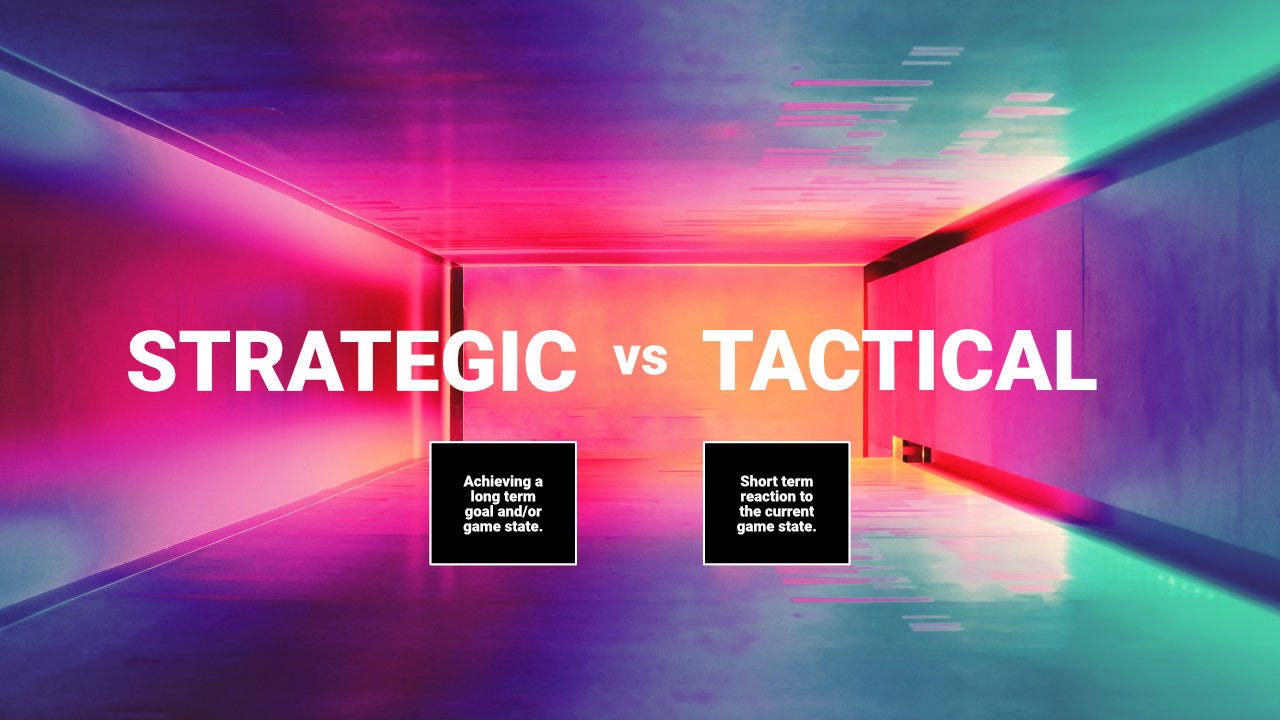
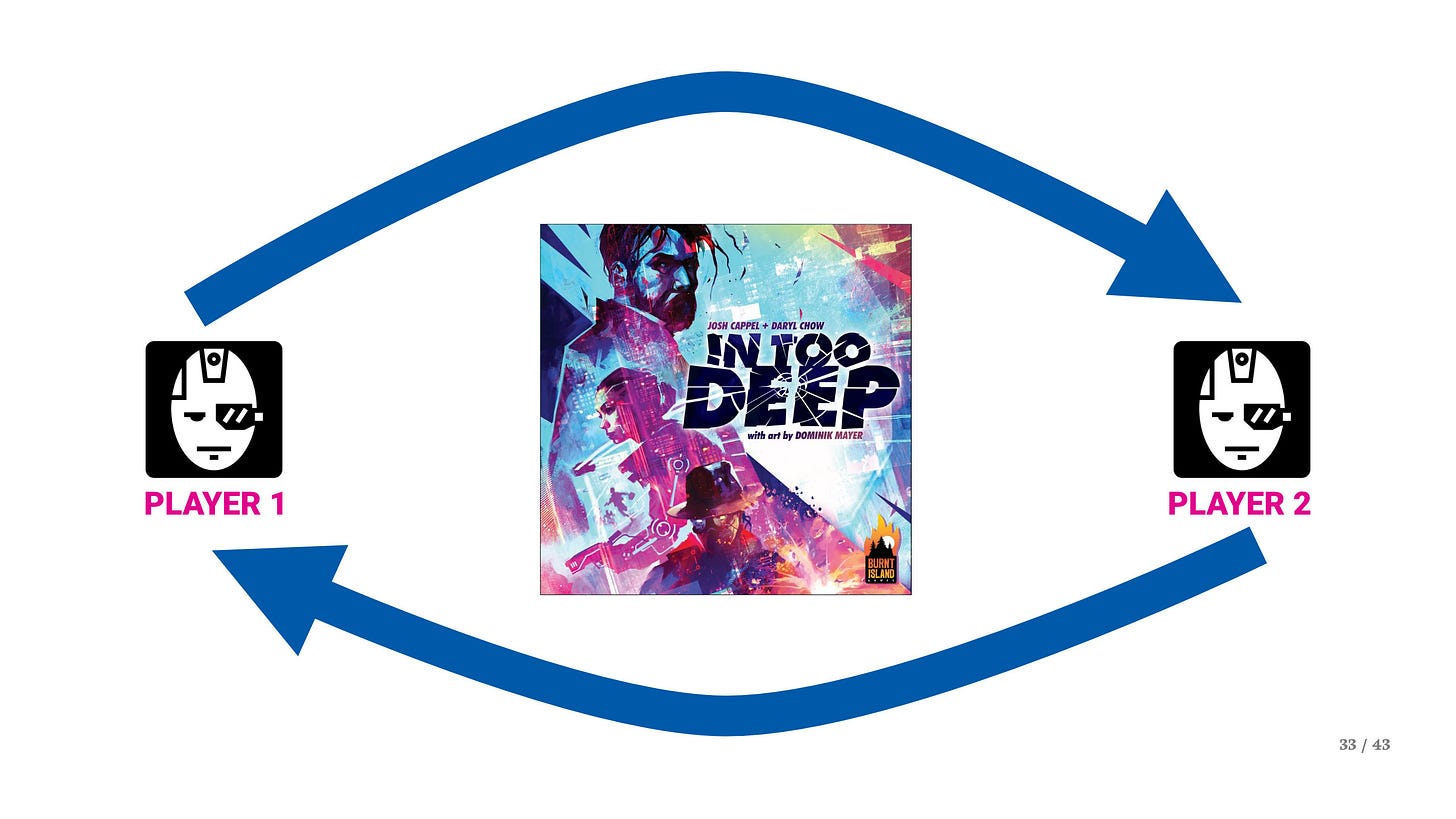
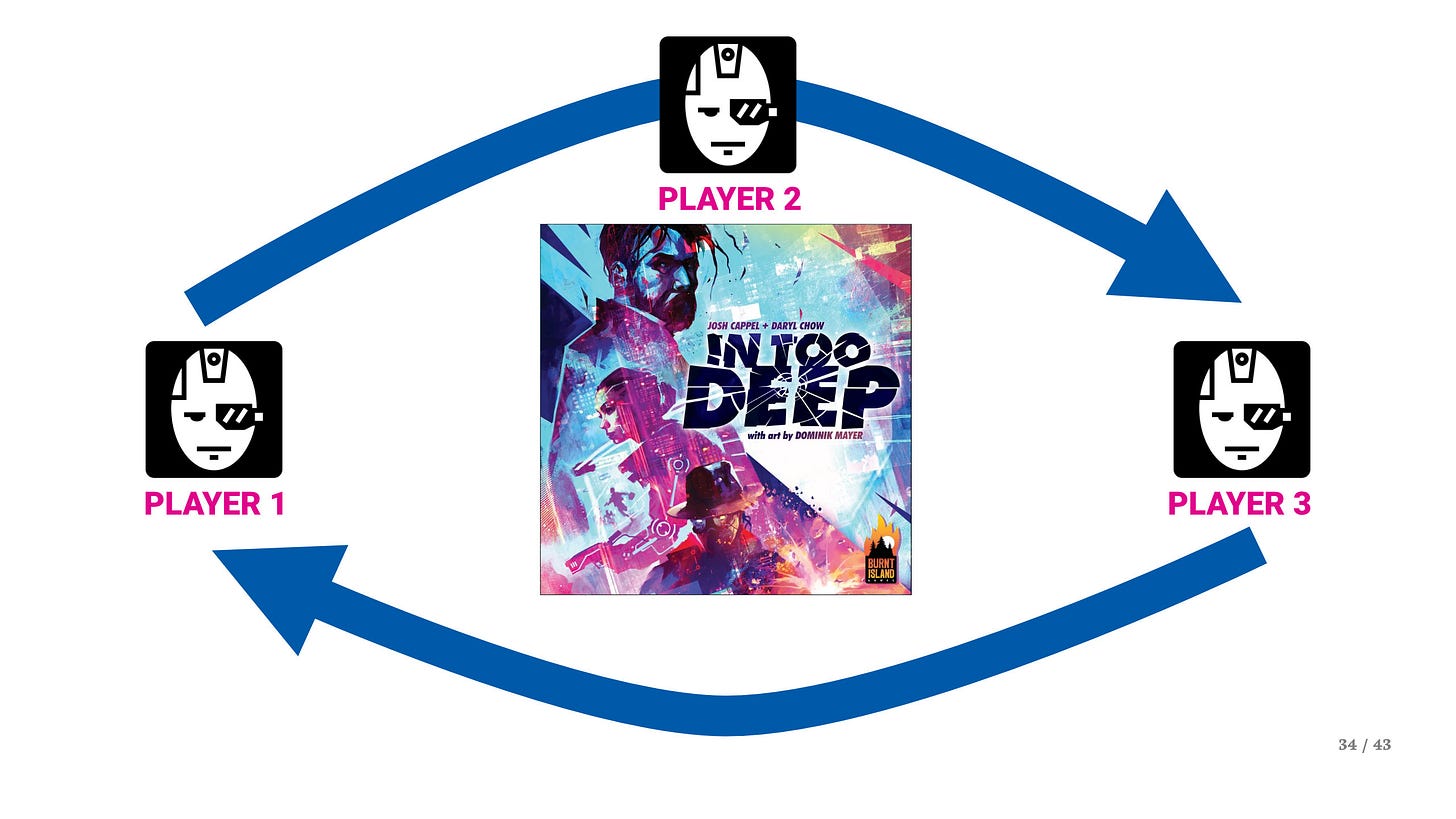

This exactly mirrors my experience playing Castle Combo by Catch Up Games. Each player is completing a tableau of nine cards from castle and village cards, and the initial expectation is that you look at the cards coming up and plan how you want to build your tableau. But playing with four people was an exercise in strategic frustration, as the cards you wanted kept being taken or buried! In the end I had to literally not look at the exposed decks until it was my turn, playing super-tactically!
Interestingly, I tend to prefer more tactical gameplay in boardgames than strategic, because with very strategic, turnbased games it feels like you end up waiting forever for your turn to come, since everyone's thinking 5-layers deep ahead of each decision. And the higher the player count, the worse it gets, since you quickly find yourself waiting ~10 minutes every round - which, bringing up the parallelism with TTRPGs, feels like the average combat in a game like D&D.